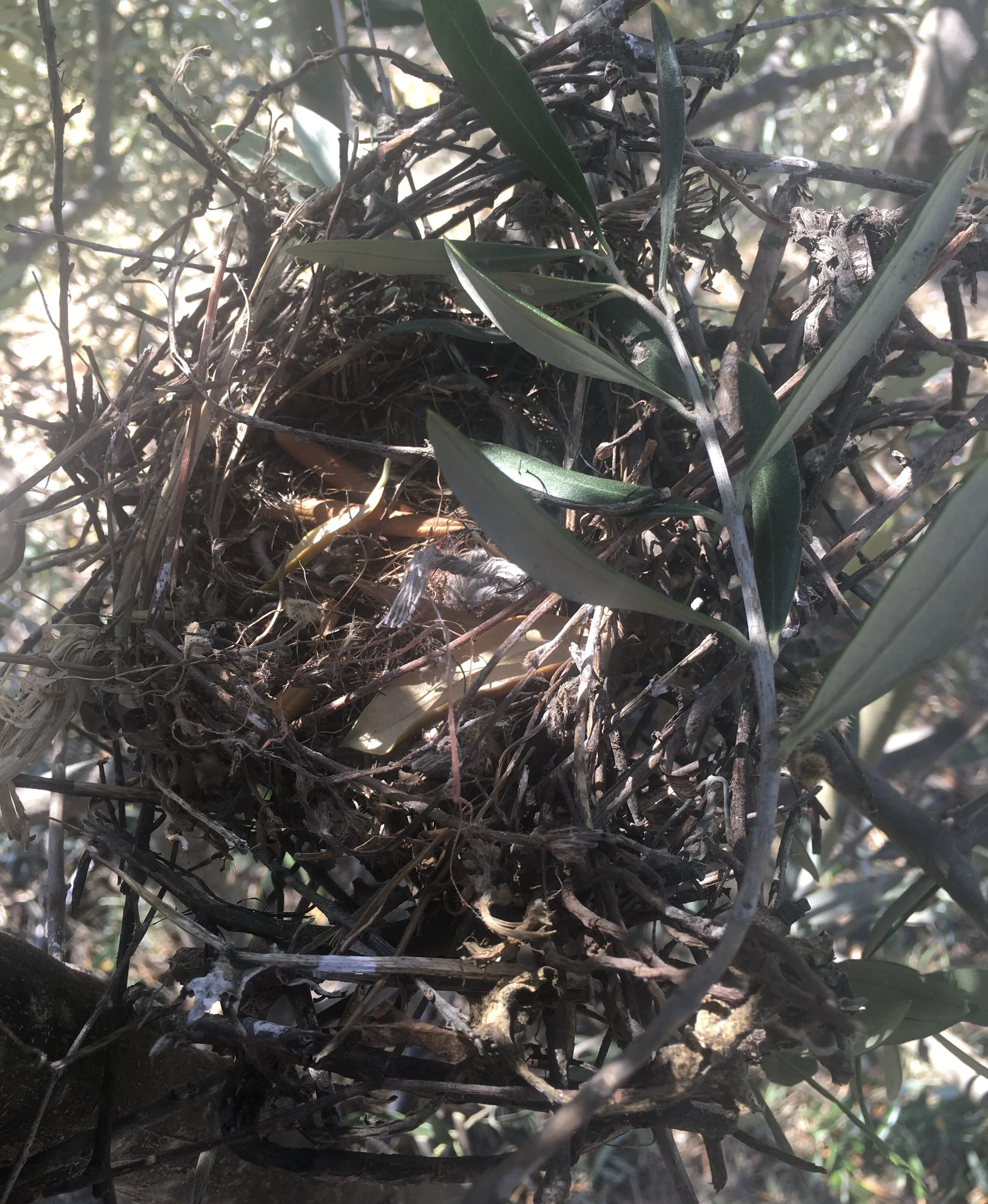Plenty has been going on at the Farm since our 2020 Harvest. Our crop may have been small last year, but we were rewarded for our efforts with a gold medal from the California Olive Oil Council. We sold out early — thanks to our loyal customers. For those of you left wanting additional oil this past year, it looks like we will have plenty to last throughout the year as the trees are showing a bumper crop of olives.
Clearly this has been the hottest summer we’ve experienced in Lake County: a series of 4 to 5 days of 100 plus degree weather occurred from June to September. The drought, heat and constant threat of wildfires have been deeply concerning to everyone, not just the farmers. We did have a lovely Spring, though, and it’s good to remember that the farm will green up once again.
April at the Farm brought green to the fields and brilliant blue skies.
The Farm has weathered the drought fairly well, though many of the native trees surrounding our fields are stressed. We hope like crazy that the 2021-2022 rainy season actually brings significant rainfall. With so little moisture in the ground from winter rains, the weeds didn’t have a chance in the unirrigated parts of the farm. We saved a lot of time and fossil fuels because we haven’t had to mow since Spring. The cover crop of favas and peas also showed the effects of drought, only growing about 18 inches tall in the rows. We mowed the cover crop at the point it where it just started to form seed pods. One tilling and we left that ground alone until we dragged it recently with a new piece of equipment we had built at AAA Welding in Lakeport. Low till and no till this year.
Right after tilling we brought in Horacio to prune the older orchard, which consists of 4 1/2 acres of about 680 trees. He worked to clear out the middle of the trees and encourage bearing branches on the outside of the trees, making harvesting much easier and more efficient. Horacio accomplished in two weeks what we tried to do in four months last year.
Everyone in Big Valley has been complaining about the unusual numbers of ground squirrels and yellow jackets. Ground squirrels are big nuisances in the orchards because of their constant tunneling beneath the trees. Neighbors reported that ground squirrels chewed through the hydraulic lines on their tractor. We trap some of them in the hopes of slowing the population down. As we get into Fall, we are seeing fewer and fewer of them. As for the yellow jackets — the danger there is pretty clear. A yellow jacket sting can be anywhere from briefly painful to life threatening. We couldn’t seem to destroy their nests with the usual off-the-shelf products or home remedies like boiling water. And we were hesitant to pour gasoline down the yellow jacket holes. Our answer was to distract and trap as many as we could, by hanging the traps directly over the nest entrances.
We ticked off a number of projects this year. The pergola by the house is complete and we have new planters filled with viburnum and native plants that will attract birds and pollinators. We now have an inviting gathering spot — for when life opens up again and we can get together freely.
Years in the planning, we finally created an inviting space at the entrance to the farmhouse.
We continued to work on bat exclusion from the house and have been grateful to see that many bats have taken up residence in their proper bat houses on the side of the barn. Another bird exclusion project was completed in the barn to keep blackbirds and finches from nesting in the precarious places they seem to love in the upper reaches of the barn rafters. More nests fell down than survived in the barn. For some reason, the tops of ladders and brooms also seemed to be their favorite nesting spots. We hope that more birds will join their friends in the orchard where the olive trees make excellent and well-protected spots for nests. We also spent some time putting metal sheaths on the house siding where flickers loved to chip away chunks of wood. We nailed up bird netting to keep them from pecking away at the attic vents. As the summer months passed, we saw and heard fewer and fewer of the flickers in the slough and none at the house or barn. Has the drought driven them away entirely?
We are pretty happy about the 700-foot hedgerow we started planting two years ago on the western edge of our orchard. With some watering, weeding and mulching it has mostly flourished. We’ve learned that the California native rose, buckwheat, sugarbush, quailbush, buckbrush, yarrow, deer grass, and goldenrod are varieties of natives that flourish here in the Big Valley where temperatures are well below freezing in the winter and hit 100 degree plus for many days in the summer. We have birds feeding off the seeds and various pollinators - including honeybees from next door and bumblebees busy among the abundant flowers.
Harvest is about a month away. The Farm has seen another cycle of seasons.













